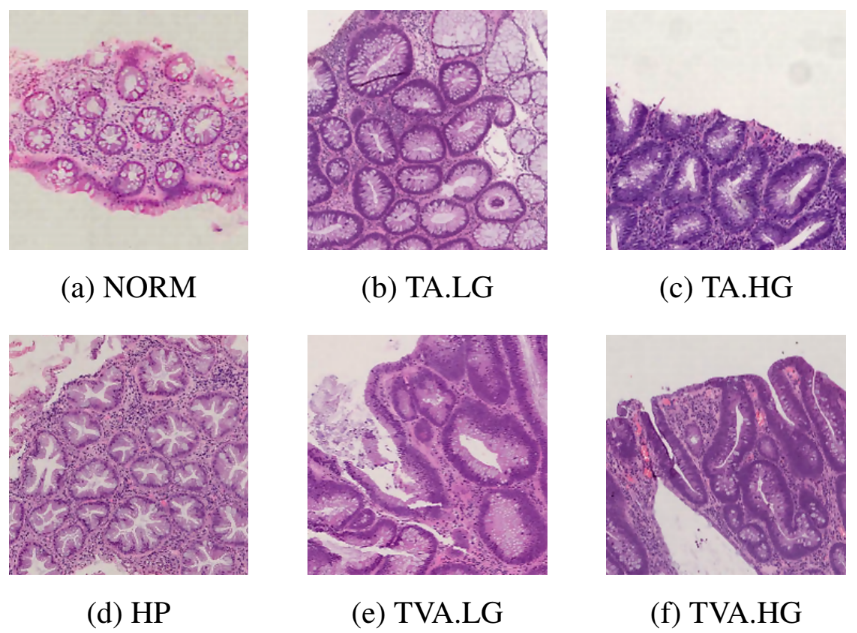Colorectal Polyps Characterization
The use-case will focus on gastrointestinal pathology, specifically colon biopsies: these particular samples represent a cornerstone activity for any surgical pathology laboratory. Differential diagnosis includes a limited number of entities, mostly neoplastic (i.e. adenomas) and more rarely inflammatory. Histopathological characterization of colorectal polyps by pathologists is the major tool for deciding the following clinical/therapeutic management of patients. The histological slides contain histological sections of the biological specimens stained with hematoxylin and eosin (H&E); H&E are chemical substances used to achieve visible colour contrast, allowing morphological diagnosis based on pattern recognition and assessment of specific features. Deep-learning is being investigated by the scientific community as a possible tool to cut the overall laboratory workload, but also to improve the diagnostic and prognostic efficacy of histological examination. In this use case, some recent results in colorectal polyps classification will be taken into account and, if possible, used as a benchmark and independently validated. The medical experts participating to the use case selected six different classes for automatic classification which represent the most common diagnoses and lead to different patients’ management:
- Normal tissue (NORM)
- Hyperplastic polyp (HP)
- Tubular Adenoma, high-grade dysplasia (TA.HG)
- Tubular Adenoma, low-grade dysplasia (TA.LG)
- Tubulovillous Adenoma, high-grade dysplasia (TVA.HG)
- Tubulovillous Adenoma, low-grade dysplasia (TVA.LG)

The Pathology Unit of UNITO will provide a labeled set of whole-slide biopsy images that will be exploited by machine learning experts in the team for models training and testing on DeepHealth ODH platform (PF5). [1], [2], [3]
Data
You can access the dataset at https://ieee-dataport.org/open-access/unitopatho
References:
- [1]C. A. Barbano et al., “UniToPatho, a labeled histopathological dataset for colorectal polyps classification and adenoma dysplasia grading,” arXiv preprint arXiv:2101.09991, 2021.
- [2]D. Perlo, E. Tartaglione, L. Bertero, P. Cassoni, and M. Grangetto, “Dysplasia grading of colorectal polyps through CNN analysis of WSI,” arXiv preprint arXiv:2102.05498, 2021.
- [3]L. B. C. A. B. D. P. E. T. P. C. M. G. A. F. A. G. L. Cavallo, “UNITOPATHO.” IEEE Dataport, 2021, doi: 10.21227/9fsv-tm25.